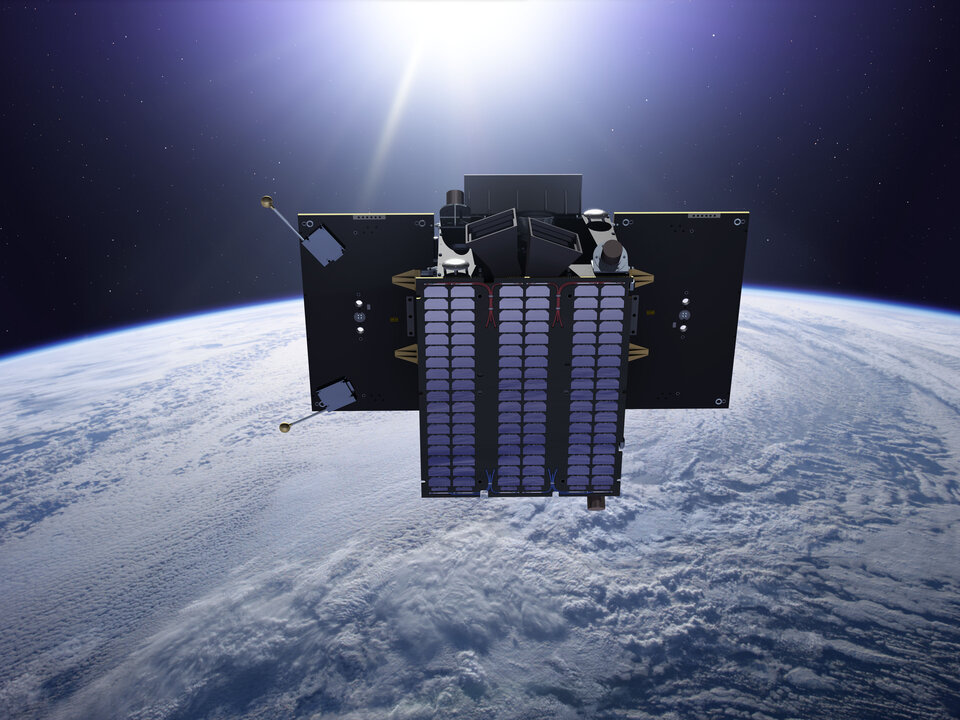Spotlighting ESA's year of technology innovations
Advanced receivers that extend satnav services indoors, new environmentally-friendly fuel for spacecraft and compact amplifiers to boost both satellite and mobile phone signals: just a few of the many new technologies to be highlighted at ESA's Techno/Innovation Days this month.
ESA’s space technology centre in Noordwijk, the Netherlands is hosting the two-day event, which takes place on 17 & 18 February and is organised by the Agency’s Directorate of Technology and Quality Management.
ESA's mission to innovate
Innovation – finding new ways of doing things – is part of ESA’s core mission. Innovative technologies open up new possibilities for space missions and applications. They help expand the technology base of European industry, ensuring its future competitiveness.
But while 'faster-better-cheaper' products get all the limelight, innovation also encompasses new processes and business models: novel methods of putting things together and operating them, or the opening up of new applications, partnerships or value chains.

In particular, ESA’s job includes identifying new arenas where existing technologies can be usefully transplanted. Space ‘spin-offs’ into terrestrial industry are well known but technology transfer is a two-way street. The space industry is increasingly drawing benefit from innovations originally developed elsewhere, known as ‘spin-ins’.
The aim of the Techno/Innovation Days is to highlight ESA’s leading role in technical innovation, communicate its major technological achievements during the past year and consider future technology trends, especially in terms of multi-purpose technologies.
Innovative discussions

The way that ESA carries out its research and development will also be discussed: how does one start turning an idea into an innovation? Does ESA innovate enough, or too much? Is the Agency targeting the right goals? A variety of speakers from ESA, the space industry and non-space technology firms will debate these questions.
“ESA’s technical heart, the European Space Technology Centre (ESTEC), is an ideal site to host such an event,” said ESA Director of Technical and Quality Management Michel Courtois. “The Techno/Innovation Days will provide an overview of ESA achievements and objectives, illustrating the complex nature of innovating for space. The plan is to include a debate with non-space actors so our innovation practices can be compared to theirs - and hopefully useful lessons learned on both sides.”
The first day will be devoted to ‘Innovation for Space’, focusing on how novel technologies mean that the next generation of satellites will look very different from those built so far and why the way we build them is changing. ESA’s Proba series of satellites encapsulates these developments, with a wide variety of technology demonstrations and science payloads crammed onto spacecraft smaller than a cubic metre.
The afternoon discussion will look at how the process of innovating for space might be further improved in future.
Highlighting R&D achievements

The second day will highlight some of ESA’s major R&D achievements as well as future technology trends. Presentations will include:
- Highly-sensitive Global Navigation Satellite System (GNSS) receivers for indoor applications
- Next-generation solar cells that can perform at the very low light levels of the Jupiter system, or survive the scorching temperatures near to the Sun
- High-specific-energy lithium-ion battery cells
- Micro-Electro-Mechanical System (MEMS) detectors and sensors shrunk onto single chips
- MEMS engines for precision spacecraft propulsion and green propellants
- Optical wireless systems
- Cold vacuum electron devices (CVEDs) delivering increased signal amplification with smaller devices
- Wearable robot control systems that operate on an intuitive basis
- New techniques to quadruple the view of Earth-observing radar satellites with no sacrifice in resolution.
How to take part
The draft agenda can be accessed via the right hand link, where you can also register your attendance.















 Germany
Germany
 Austria
Austria
 Belgium
Belgium
 Denmark
Denmark
 Spain
Spain
 Estonia
Estonia
 Finland
Finland
 France
France
 Greece
Greece
 Hungary
Hungary
 Ireland
Ireland
 Italy
Italy
 Luxembourg
Luxembourg
 Norway
Norway
 The Netherlands
The Netherlands
 Poland
Poland
 Portugal
Portugal
 Czechia
Czechia
 Romania
Romania
 United Kingdom
United Kingdom
 Slovenia
Slovenia
 Sweden
Sweden
 Switzerland
Switzerland



























